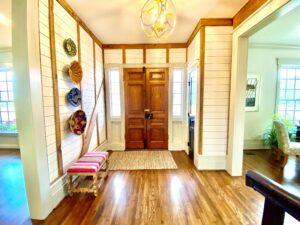The Moss-Morris House at Olde Homestead, Part II
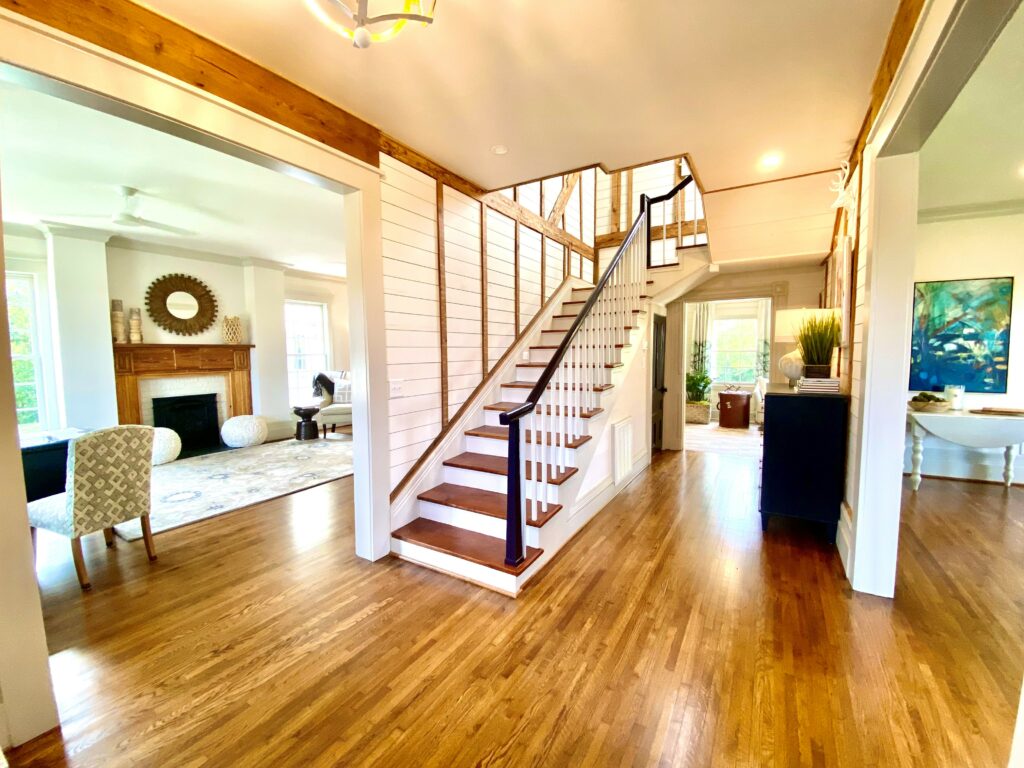
There is so much history that can be found in The Moss-Morris House as well as the land that makes up the Olde Homestead community.
So lets start from the beginning, the purchasing of the land and how it became The Moss-Morris House.
-1816, John B. Moss buys 212 acres of farmland from the State of NC.
-1830-1845, John B. Moss builds the original house.
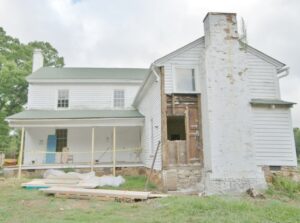
-1874, John B. Moss deeds property to his son, John A. Moss.
-1893, Widow of John A. Moss sells property to PM Morris to be used for farmland.
-1903, PM Morris dies and his son ZA Morris inherits the property.
-1905-1910, ZA Morris and wife renovate the interior of the home.
-1949, ZA Morris dies, his son Hubert Morris inherits the home and the surrounding 24 acres.
-1950-1953, Hubert Morris and his wife add a 2-story Ionic Portico but keep the original antebellum details.
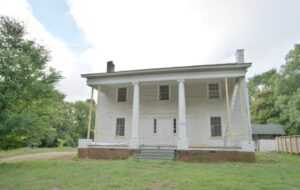
-1989, Joanne Morris Hodges inherits the land from her father.
-2020, Niblock Homes purchases the land from Jesse Hodges (widower of Joanne Morris Hodges).
So you see, with all of the history behind this home, there was just no way we could tear it down. There was only one choice, and that was to renovate and give this old home new life.
We would like to welcome you inside The Moss-Morris House at Olde Homestead.
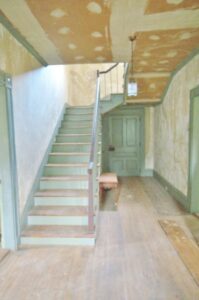
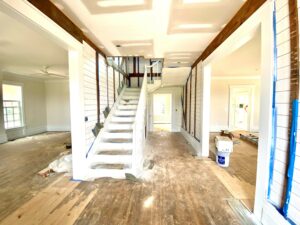
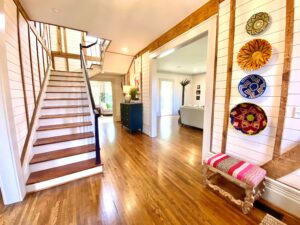
The walls were taken down to the framing so that the existing electrical, plumbing, insulation, and HVAC could be replaced.
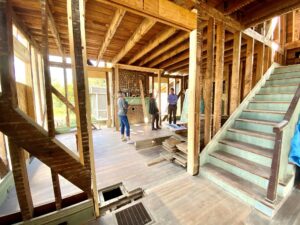
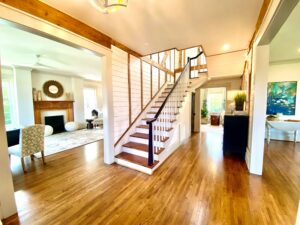
New energy-efficient windows were installed that reflect the original design. The foyer showcases the unique marriage markings that were present on the framing members, which are typical of post and beam construction during the Antebellum period.
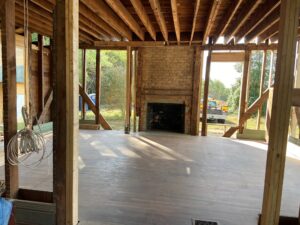
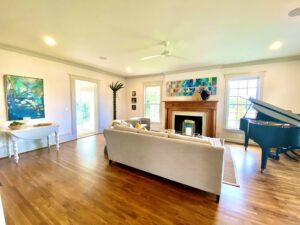
Carpenters during the 1800’s used this method for marking adjacent beams with Roman numerals to keep track of where the beams were to be located.
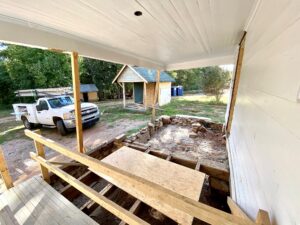
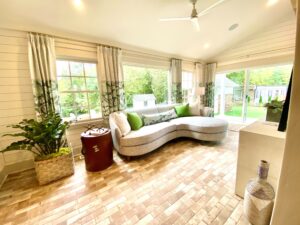
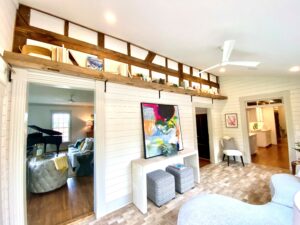
On the back of the home there was a small covered porch. We enlarged this area, raised the ceiling height, and turned this space into a sunroom. We also used one of the beams found in the home to make a decorative shelf.
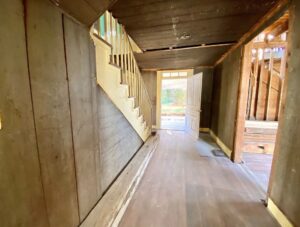
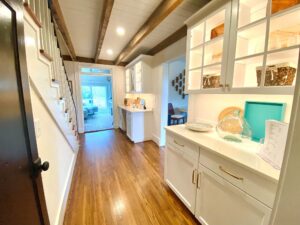
Interior moldings and doors were salvaged, as was the shiplap used throughout the home, which was found in the attic during construction.
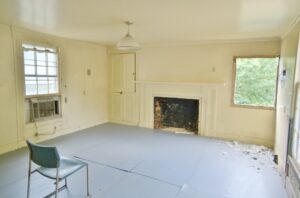
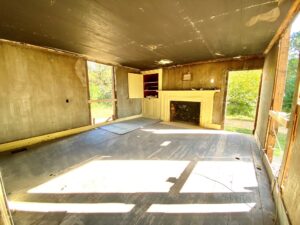
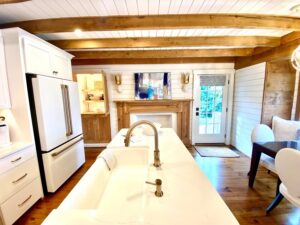
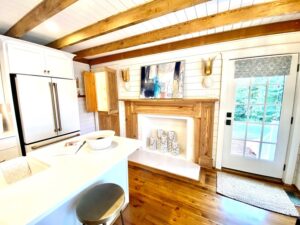
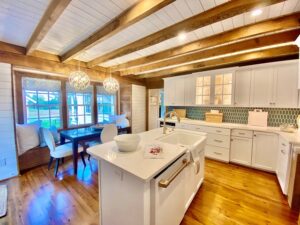
The kitchen underwent a big transformation. We closed off the side window in order to add cabinets, we added a door to the outside in place of the back wall window, and we bumped out the side about 2 feet in order to create the breakfast nook. Add the shiplap, wood beams, and built-in bench seat and we now have an up-to-date kitchen with traditional charm.
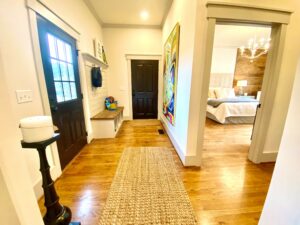
As we stated in our last post, the master suite, laundry room, and garage are all new additions that we added to the home.
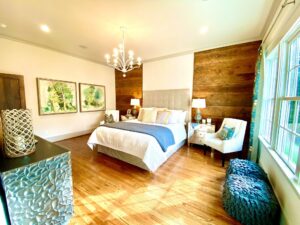
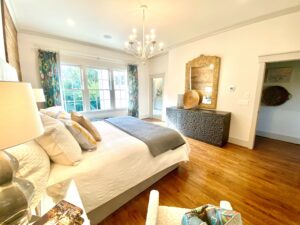
We wanted this new addition, to feel like it had always been there. The wood detail on the back wall of the master bedroom is original to the home.
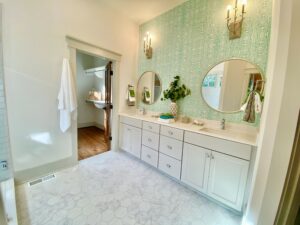
The Master Bathroom might be one of our favorite designs. From the wallpaper to the tile, even the built-in wooden shelves, everything flows together throughout this entire home. We even tried to match the “new” doors to the existing ones as best we could.
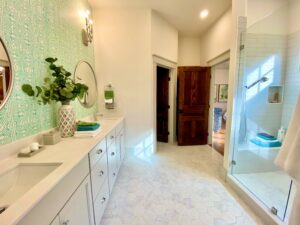
Check back next week for our new post on the upstairs renovations to The Moss-Morris house at Olde Homestead.

